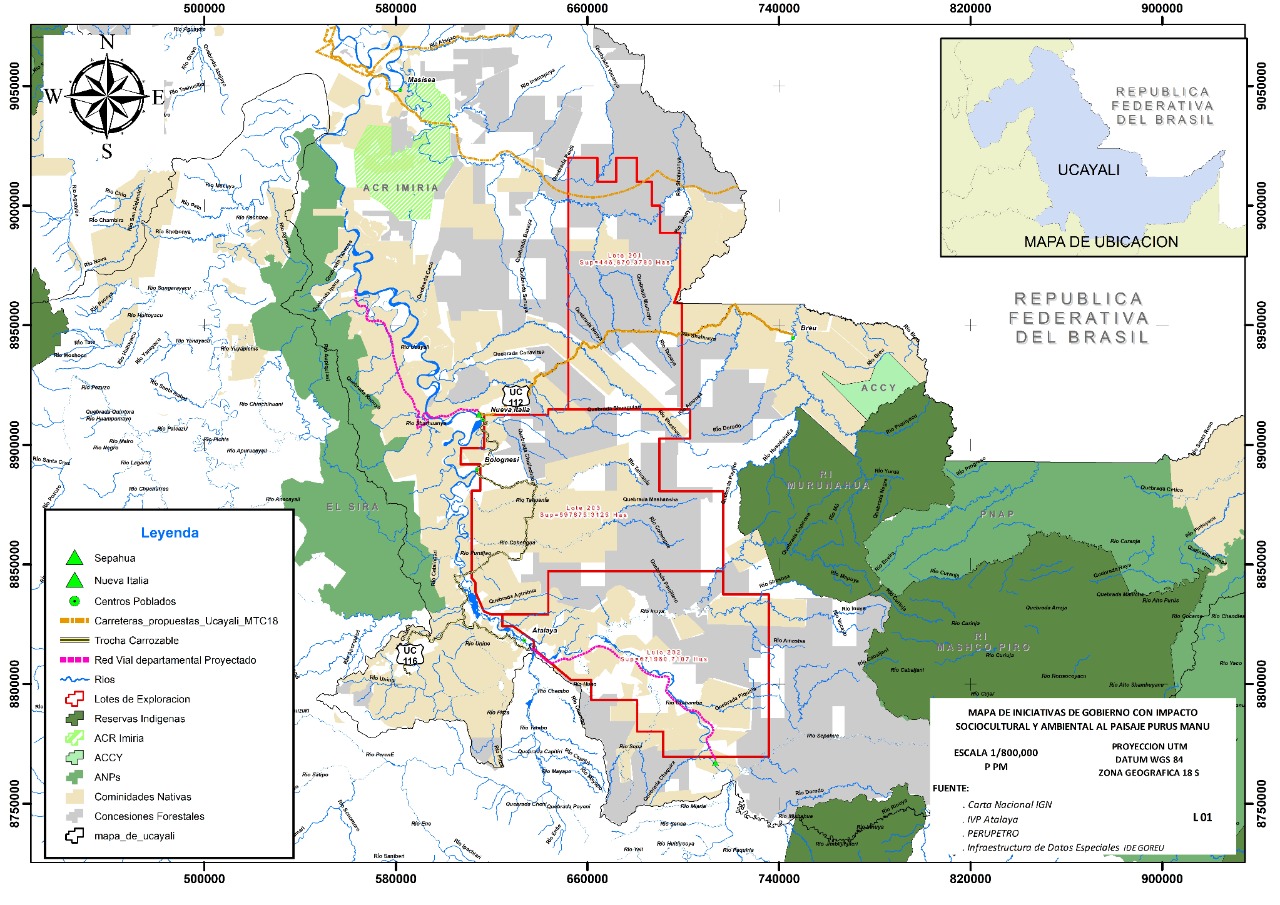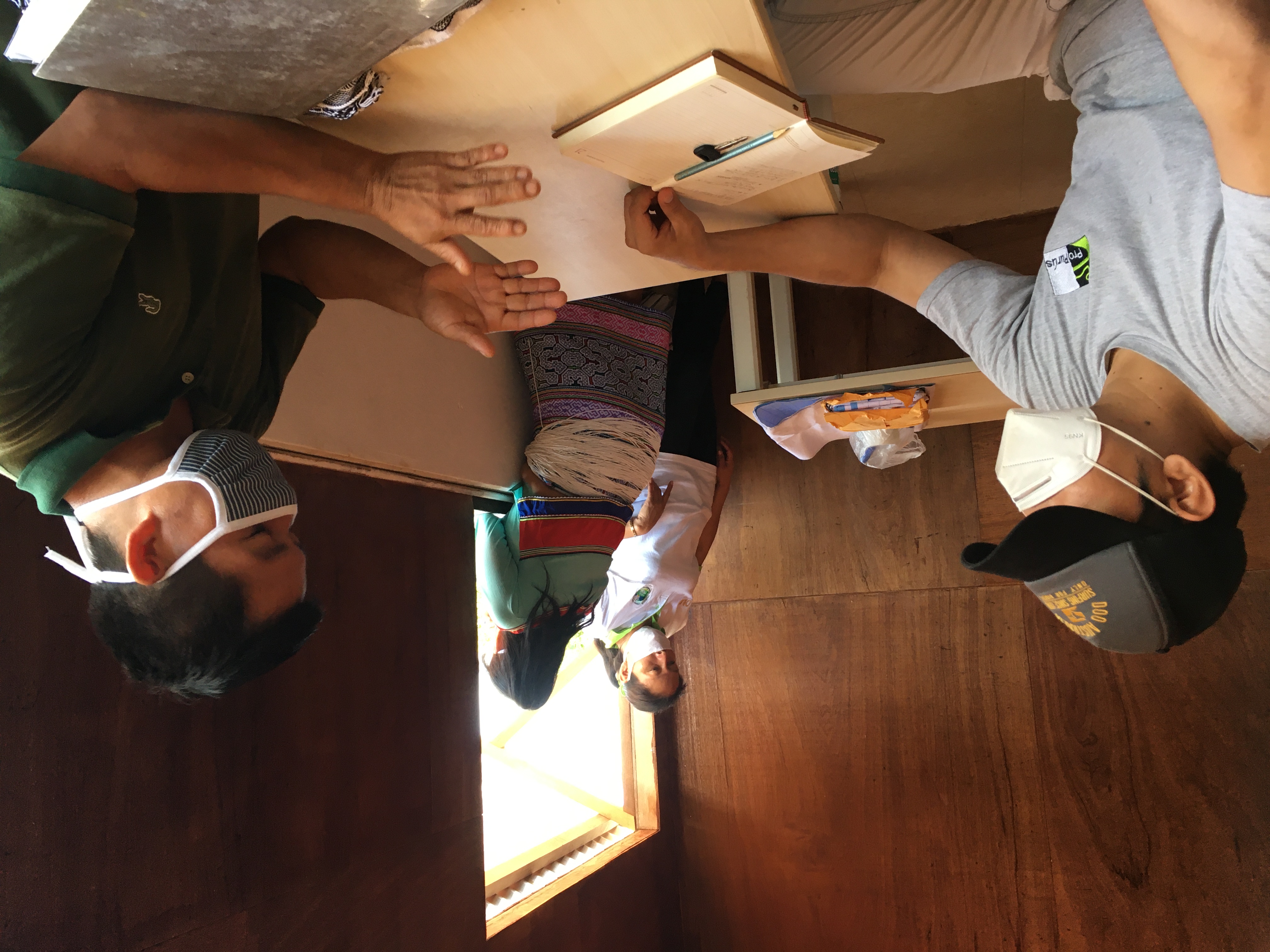
A very preliminary estimate of the impacts of the UC-105 Nueva Italia Breu road indicates that, without an adequate land use plan and assurance of the rights of the local indigenous population, around 100,000 hectares of forests would be affected in about 5 years. the equivalent of 6 times the entire extension of the Province of Callao. In about 15 years, the impacts on biodiversity would have reached some 350 thousand hectares, threatening the Alto Purús National Park, the Murunahua Indigenous Reserve and the Yurúa Conservation Concession.
Dangerous Roads
By Ivan Brehaut*
August 28, 2020. - While we all continue to think about the pandemic, a new front of deforestation and looting of resources opens in the Peruvian Amazon. Apparently, the interconnection between Brazil and Peru, through the center of the country, will soon be a reality.
Indeed, before the start of the pandemic, the mayors of Satipo in Junín and Atalaya in Ucayali began to promote the dream of connecting with Brazil and reaching markets for their products. The dream of Satipo and a large part of Junín is to bring Andean products to Brazilian consumers and offer them, for example, the phosphate rock that Brazilian agriculture needs. The gateway would be Thaumaturgo, on the border between the two countries. Up to this point, everything seems to be fine.
However, the UC-105 Nueva Italia Breu highway, some 300 kilometers long, crosses extensive areas of native communities and forest concessions. This road is called the "oil highway" by some, since it also crosses oil lot 201, which was built in an area already explored years ago that has oil reserves waiting to be extracted.

Oil lots, highways and communities. Source: ProPurus
As if that were not enough, the well-known support committees, defense fronts and the like are already organizing to occupy the new lands that would be enabled by the highway, demanding that their authorities speed up the work. From Tahuanía, several committees, some led by FREPAP (Agricultural People's Front of Peru) militants, are gathering hundreds of new settlers.
Conveniently, the proposed road is already half built. Moving forward in an ant-work fashion, the highway is taking advantage of old logging roads significantly reducing the cost. In fact, UC-105 is legalizing precarious and informal roads that were built for logging.
The road is being built without environmental studies and without taking into account any considerations for the rights of indigenous peoples, little by little, almost by hand, without attracting the eyes of national authorities and other stakeholders interested in forest conservation and sustainable development for citizens.
“They have not consulted us about that road. Was there prior consultation? Have they given the people information about that road?" Donato Piñango, the Asháninka leader who chairs ACONADYSH, the federation that groups together the native communities of the Yurúa river basin, wonders. For Donato, as for the vast majority of the population of the Yurúa basin, the highway is a great opportunity, but Donato is also aware of the enormous risks.
The pressures to give the green light to the work do not wait. He stated, "They have already told me that I have to support the highway ... but (the) authorities do not communicate with us, not via letter, nor anything else, they only send other people to tell us that we must support this". Around 100,000 hectares of forests would be affected in about 5 years, the equivalent of 6 times the entire extension of the Province of Callao.
The impacts of a road like this one are massive. A very early estimate of the impacts of this road indicates that, without an adequate land use plan and assurance of the rights of the local indigenous population, around 100,000 hectares of forests would be affected in about 5 years, the equivalent of 6 times all the extension of the Province of Callao. In about 15 years, the impacts on biodiversity would have reached about 350 thousand hectares, already threatening the Alto Purús National Park, the Murunahua Indigenous Reserve and the Yurúa Conservation Concession.
However, the first impact, perhaps the most disastrous, would be the one that would strike the 15 native communities of the Yurúa district, whose lands have not been fully cleared in compliance to the latest agrarian regulations yet and who, without further support, would be left at the mercy of the invader groups and land traffickers.

Donato Piñango explains his fears concerning the road.
Much has been discussed regarding the usefulness of highways, particularly in the Amazon and on indigenous lands. The balance, without a doubt, is environmentally and socially negative, since the roads are the center of management and not a part of planning. Obviously, planning, if carried out, would help to reduce some of the impacts; and who knows, it might really support the local development processes that indigenous peoples sorely require.
As a young indigenous woman said recently, "We are the first to be affected by the impacts, but the last to be considered in the decision-making process." The Nueva Italia Breu road will be built without complying with the regulations, but we still have time to act.
---
* Ivan Brehaut, traveler, not a tourist. I travel through Peru, I write about what I see and learn. Photography, nature and humanity.
The contribution from Marisell Pinchi and Carlos Torres from the ProPurús Association is appreciated.

Añadir nuevo comentario